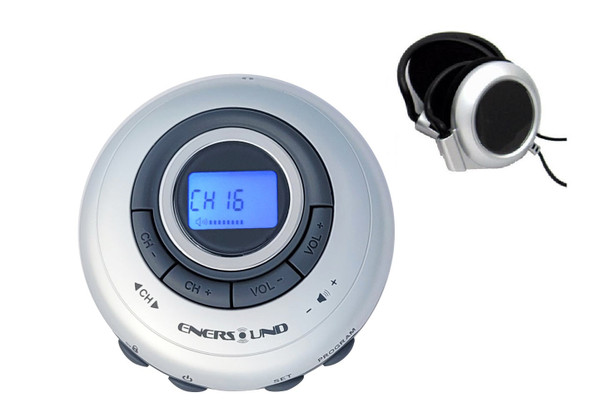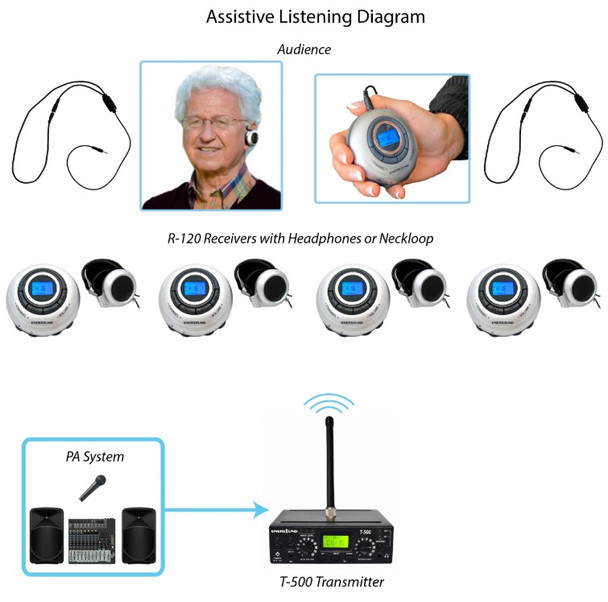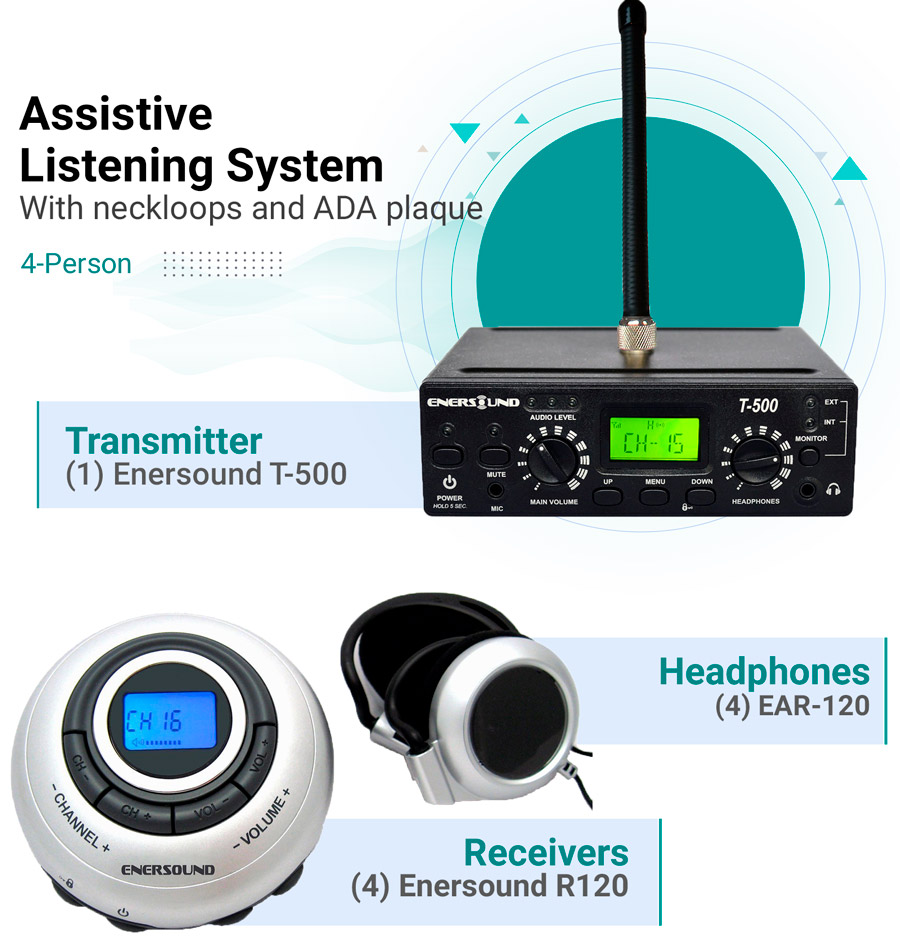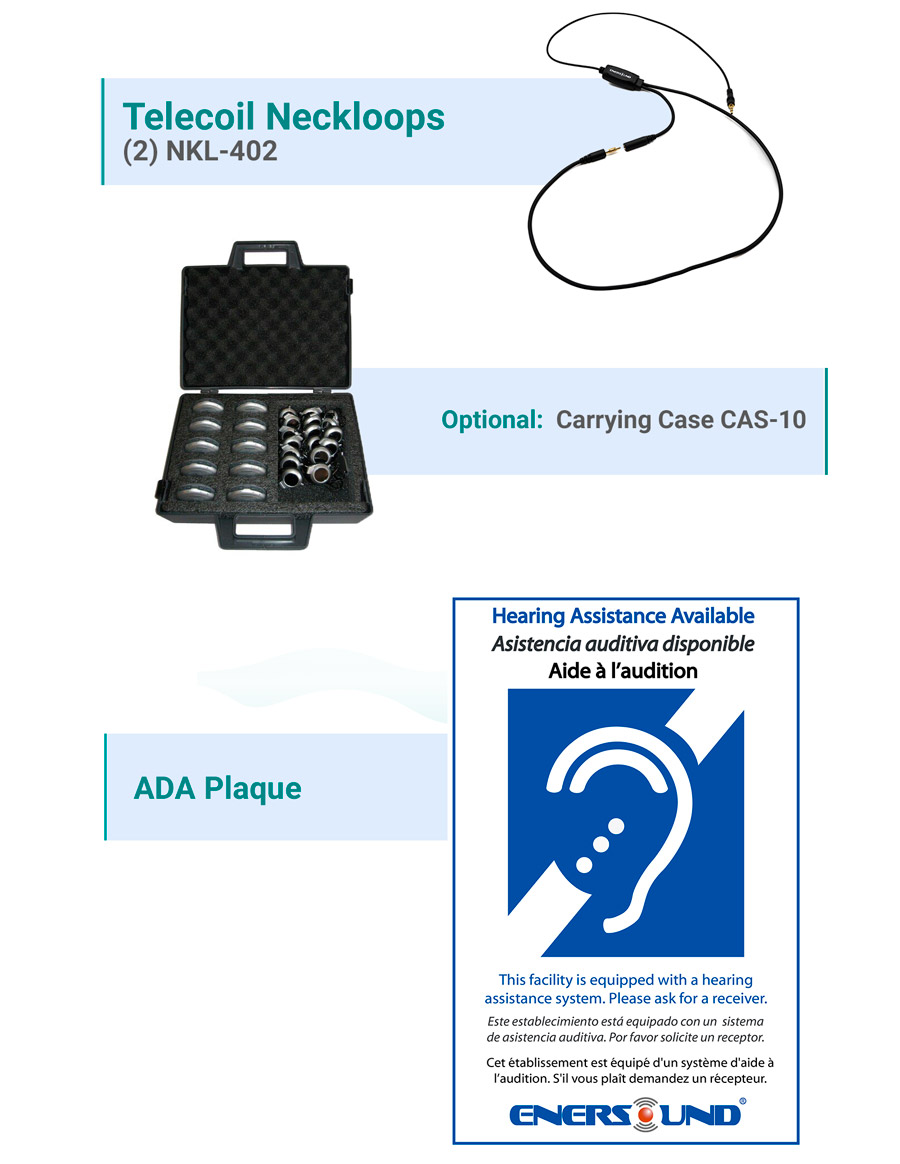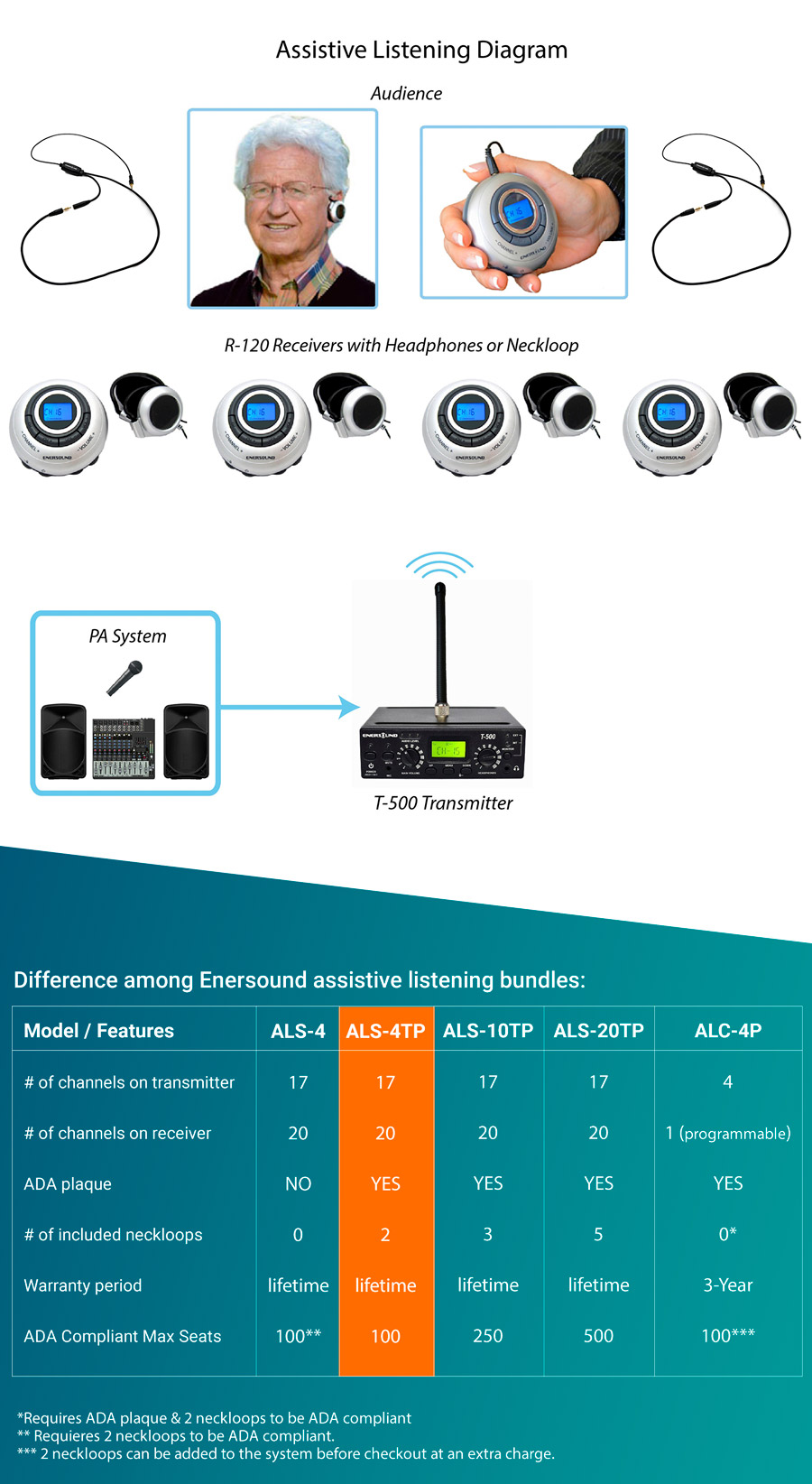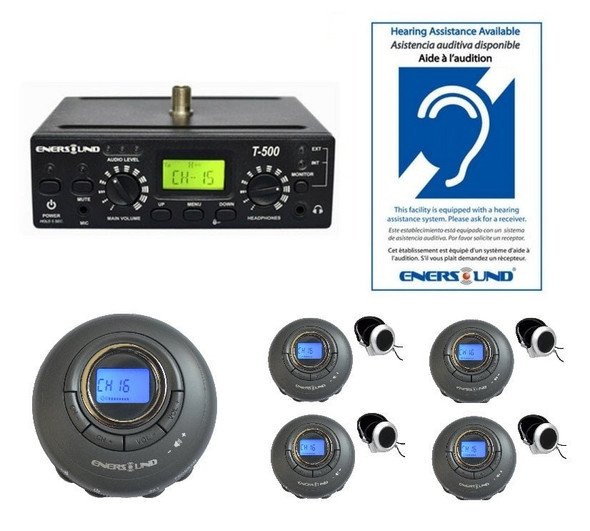Enersound
4-Person Enersound Assistive Listening System with Neckloops and ADA Plaque (Limited Lifetime Warranty)
- SKU:
- ALS-4TP
- MPN:
- ALS-4TP
- Availability:
- In stock
- Weight:
- 4.95 LBS
- Shipping:
- Calculated at Checkout
Frequently bought together:
Warranty Information
LIMITED LIFETIME WARRANTY ON R-120 RECEIVERS AND T-500 TRANSMITTERS purchased after May 15, 2019. 1-YEAR WARRANTY ON ALL ACCESSORIES (including microphones, headphones, carrying cases, cables, antennas, power supplies, etc.).
Visit Enersound website for complete warranty details and limitations. Contact us or see manufacturer site for more details.
View AllClose
15 Reviews
-
Easy to use
Perfect for providing assistive listening for our church attendees. It's very easy to set up and use.
-
Highly reliable
We don't use it frequently but when we have to it's always easy to set up and the audio quality is very good
-
100% satisfecho
Excelente producto, muy buena calidad. Envio rapido y una agradable atencion de los vendedores. Volveria a comprar!
-
A great help
We use it in our church. This has helped a lot, and it's very reliable!
-
The Perfect Solution
We are extremely satisfied with this system
-
Great system
This was the perfect solution to meet ADA requirements in our school. The sound is perfect and the design is beautiful. And we bought and extra mic to use as translation equipment in PTO meetings.




